Brickellia californica, California Brickellbush
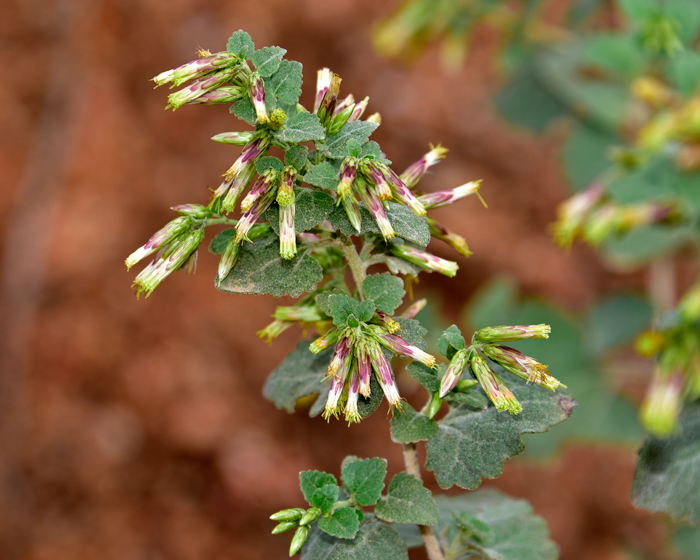
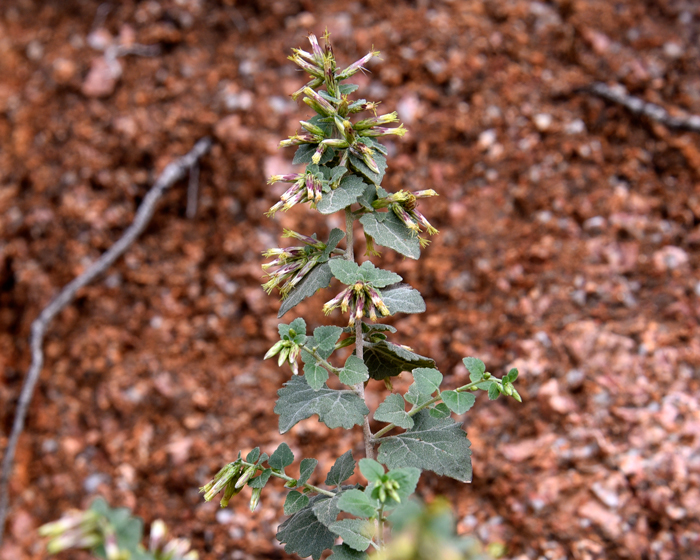
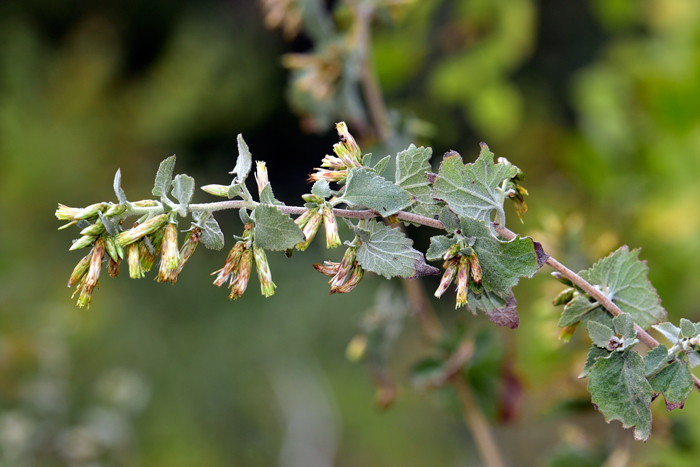
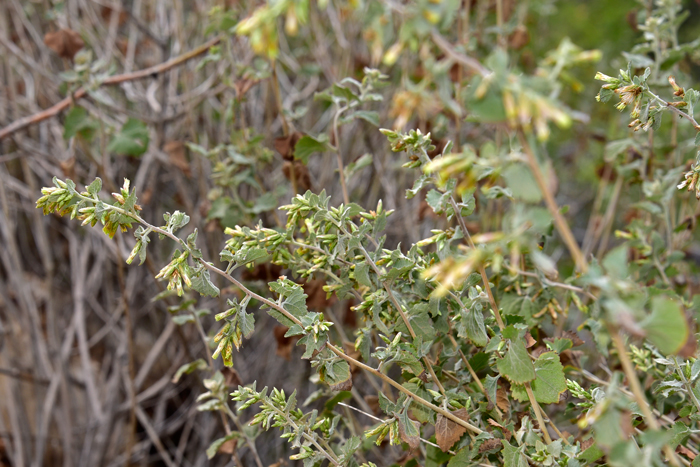
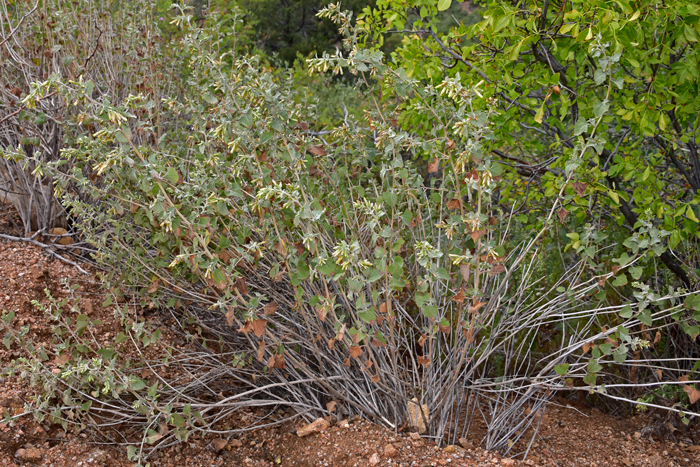
Scientific Name: Brickellia californica
Common Name: California Brickellbush
Also Called: Brickell-bush, California Brickellia, False Boneset, Jepson's Brickellbush, Pachaba; (Spanish: Hierba (Yerba) de la Vaca, Prodigiosa)
Family: Asteraceae, Sunflower Family
Synonyms: (Brickellia brandegei, Brickellia californica var. californica, Brickellia californica var. jepsonii, Bulbostylis californica)
Status: Native
Duration: Perennial
Size: 2 feet (60 cm) or up to 6 feet (200 cm) tall.
Growth Form: Shrub or subshrub; woody; branches erect, and or spreading; thickly branched from base; glandular-pubescent;.
Leaves: Green; leaves generally alternate; leaves with supporting stalks (petioles); blades heartshaped or ovate to deltate; leaf edges or margins scalloped (crenate) to asymetrically toothed (serrate); leaf surfaces covered with minute soft erect hairs (puberulent) to becoming hairless (glabrous); often gland-dotted.
Flower Color: Pale yellow-green with white to pink; flowers in panicles or single (solitary) from leaf axils; disk flowers only (8 to 12 florets); fruit a cypsela, with a pappus of white barbed (barbellate) with stiff hairs (bristles).
Flowering Season: July to November or December.
Elevation: 2,500 to 9,000 feet (760-2,700 m).
Habitat Preferences: Various habitats, dry rocky hillsides, arroyos canyons, dry creeks, streambeds, sea bluffs; upper deserts, chaparral vegetation, pinyon-juniper and pine forest.
Recorded Range: Brickellia california is native to the southwest and northwestern United States in AZ, CA, CO, ID, NM, NV, OK, TX, UT, WA. It is also native to Baja California and northern Mexico (Sonora, Chihuahua and Coahuila). It is common throughout its large geographic range.
North America & US County Distribution Map for Brickellia californica.
North America species range map for Brickellia californica:
North American range map courtesy of Virginia Tech, Dept. of Forest Resources & Environmental Conservation
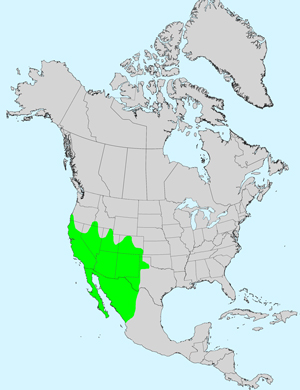
U.S. Weed Information: Unknown
Threatened/Endangered Information: Unknown
Invasive/Noxious Weed Information: Unknown
Wetland Indicator: In North America Brickellia californica has the following wetland designations:
Arid West, FACU;
Great Plains, FACU;
Western Mountains, Valleys, and Coast FACU.
FACU = Facultative Upland, usually occur in non-wetlands, but may occur in wetlands.
Genus Information: In North America there are 36 species and 36 accepted taxa overall for Brickellia. World wide, The Plant List includes 112 accepted species names and includes a further 136 of infraspecific rank for the genus.
The genus Brickellia was published by Stephen Elliott in 1824.
In the Southwestern United States: Arizona has 22 species of Brickellia, California has 13 species, Nevada has 12 species, New Mexico has 19 species, Texas has 15 species, Utah has 7 species. All data is approximate and subject to taxonomic changes.
There are 2 varieties in Brickellia californica:
Brickellia californica var. californica, California Brickellbush; (AZ, CA, CO, ID, NM, NV, OK, TX, UT, WA);
Brickellia californica var. jepsonii, Jepson's Brickellbush; (California).
Comments: California Brickellbush is a common species throughout its large geographic range. It is pleasantly fragrant and commercially cultivated and used in California as a landscape species for native plants. According to Arizona Flora "It is called Pachaba by the Hopi Indians who are reported to rub it on the head for headache". See full Ethnobotany below.
In Southwest Desert Flora also see; Coulter's Brickellbush, Brickellia coulteri, Chihuahuan Brickellbush, Brickellia floribunda and Veiny Brickellbush, Brickellia venosa.
The genus Brickellia was published by Stephen Elliott in 1824.
The species epithet californica (califor'nica/califor'nicum/califor'nicus:) means of or from California.
See complete listing of ethno-botanical uses at Native American Ethnobotany, University of Michigan, Dearborn.

